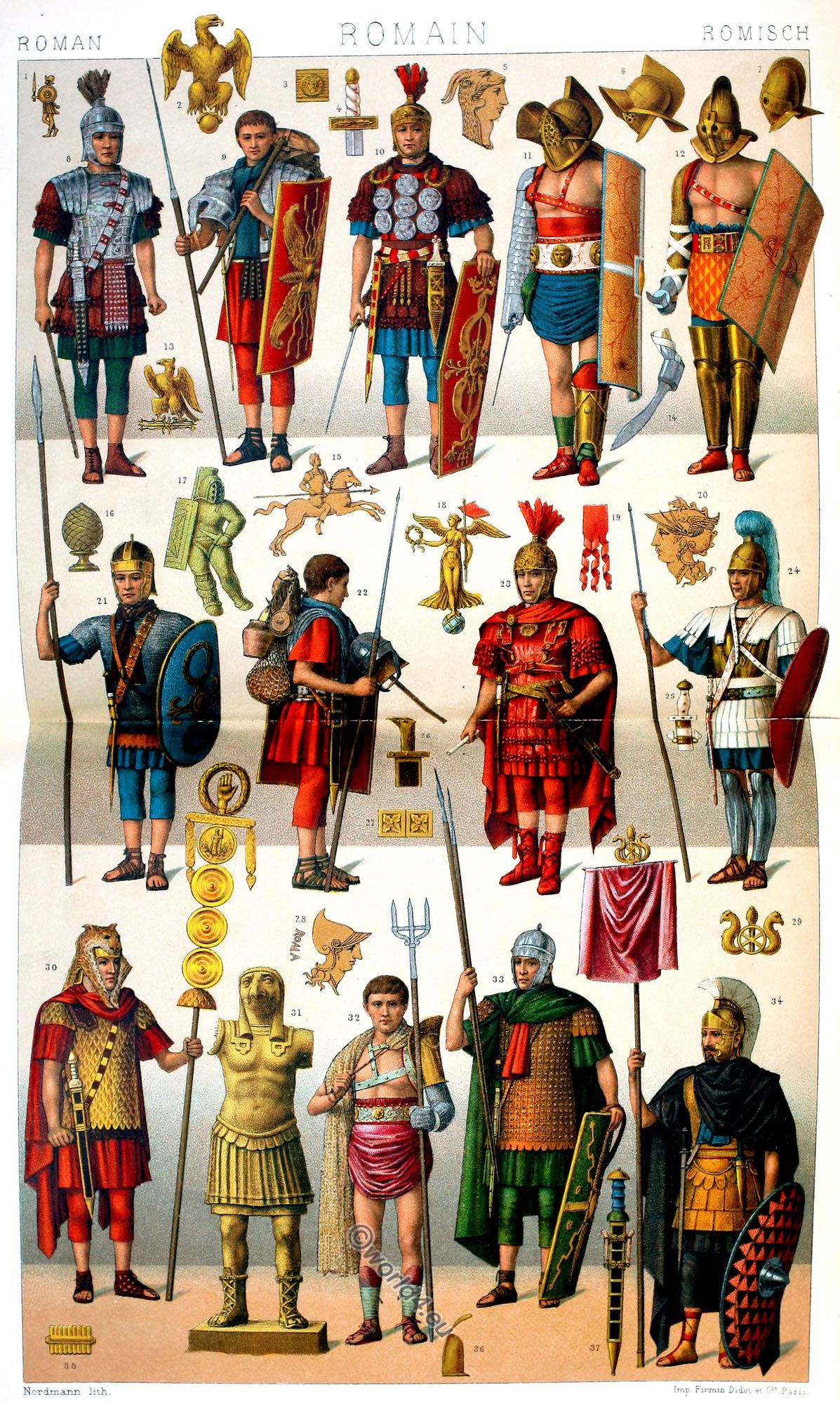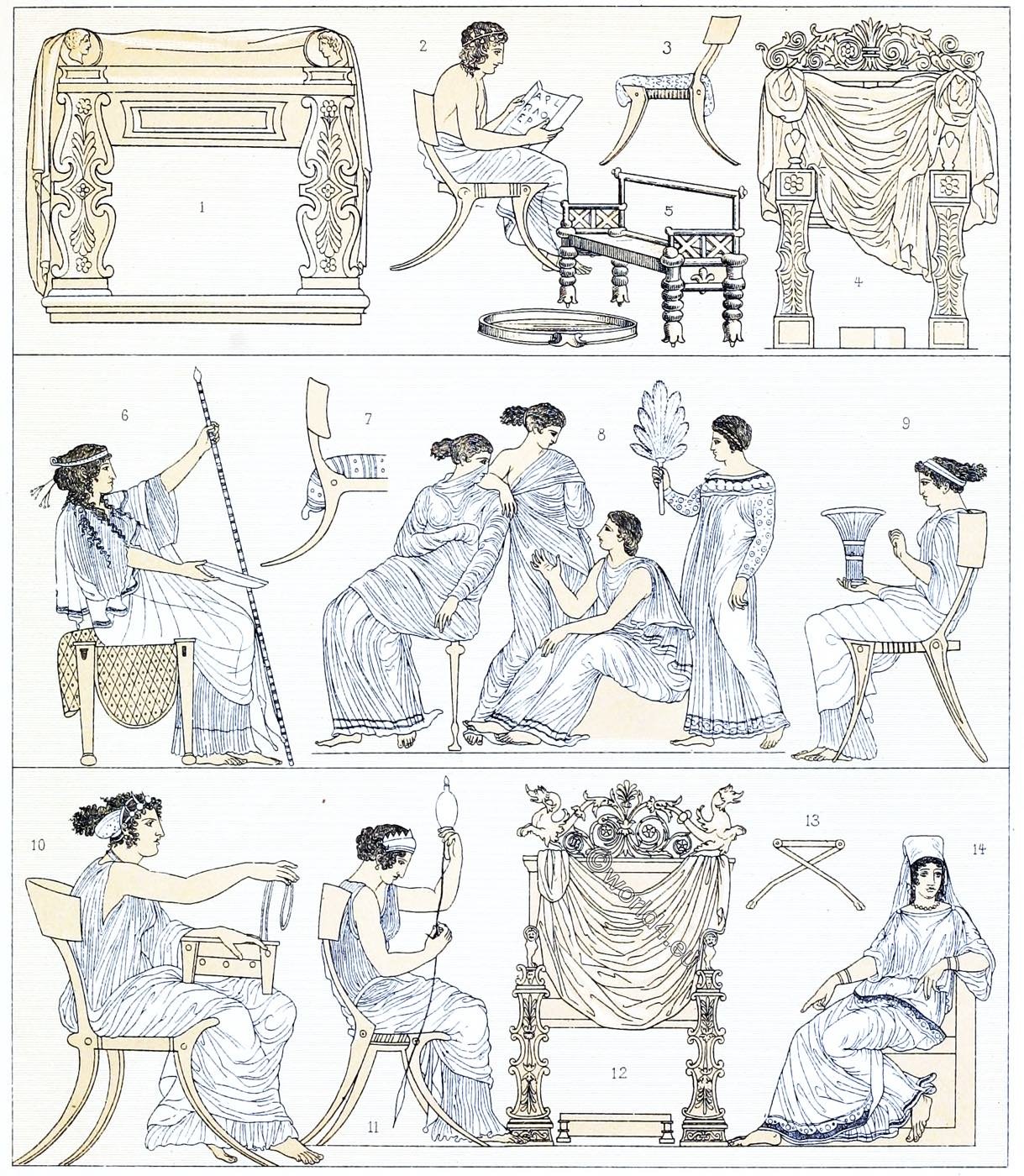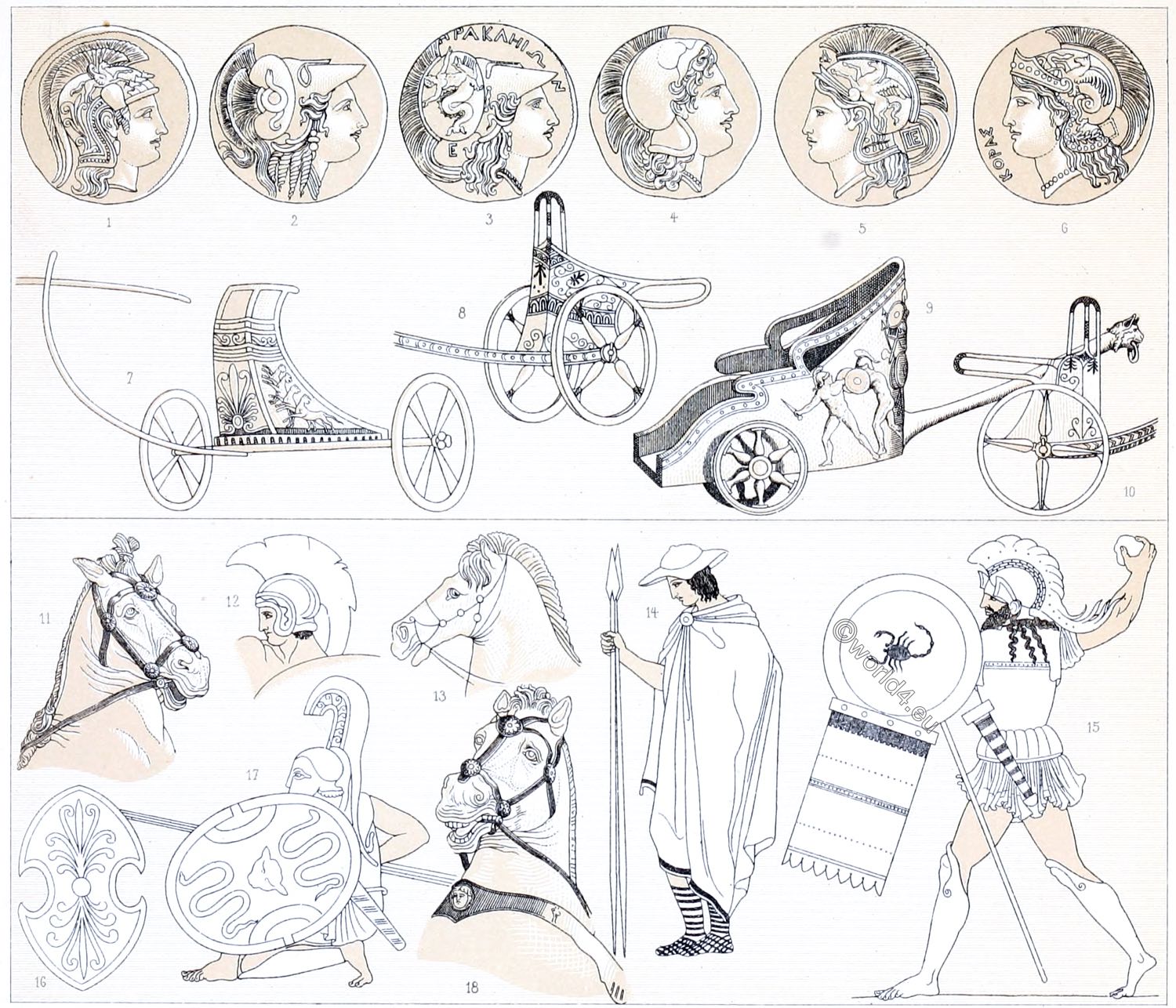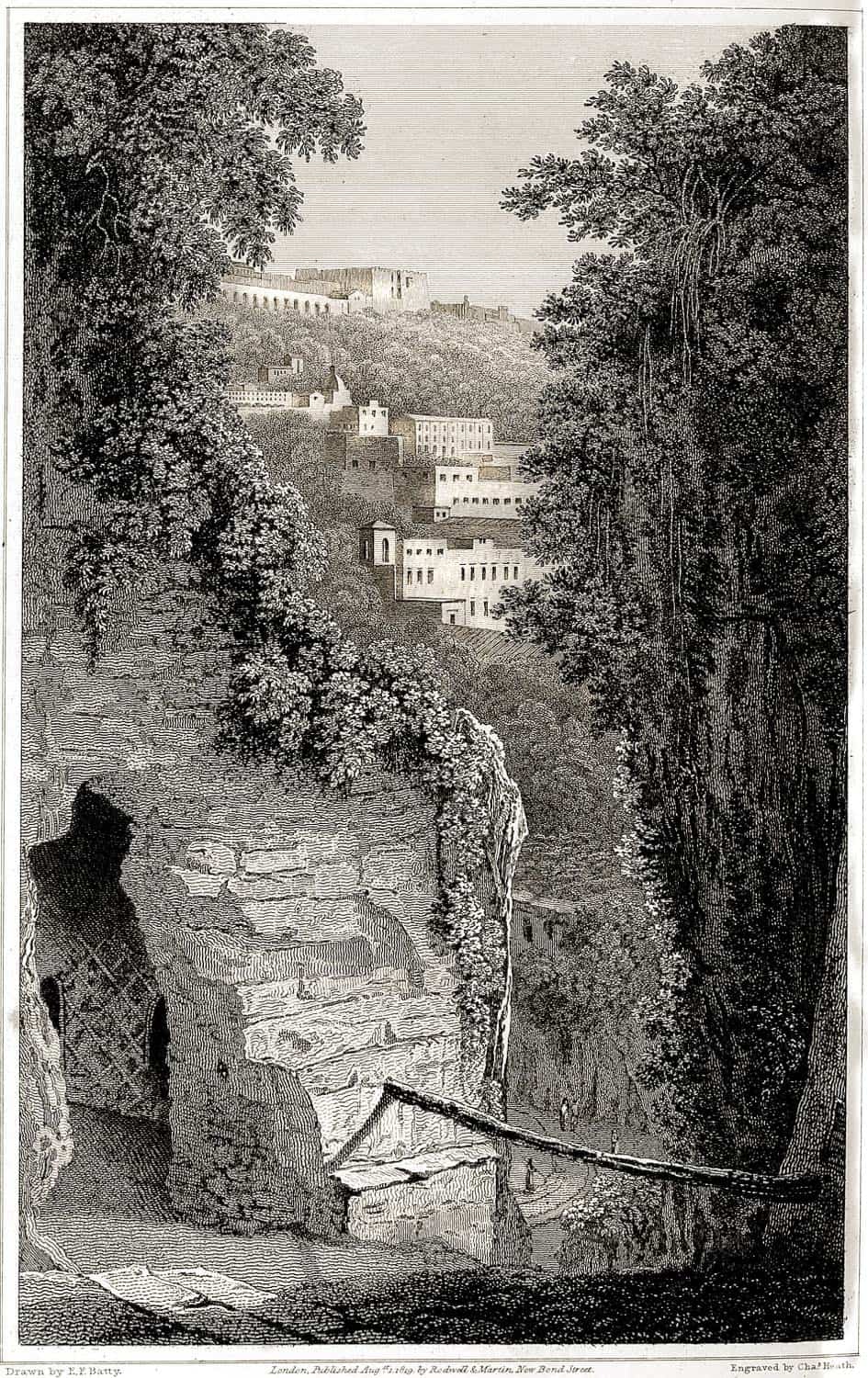
ROM. HEADGEAR AND HAIR.
1 2 3 4 5 6
7 8 9 10 11 12
13 14 15 16 17 18
19 20 21 22 23
- Nos. 1, 8, 9. After murals and bronzes in the Herculaneum.
- No. 2: The headgear called Kausia, which was common among the Macedonians and was worn especially by sailors. After Caylus.
- Nos. 20, 21st head of a female statue found in Apt in Provence, France from different sides. With a strip of leather or fabric to maintain the toupee.
- No. 22. Veiled woman’s head after a sculpture.
- No. 3. Alleged poetess after a mural painting from Herculaneum.
- Number 13 represents a wig.
- Nos. 4, 5. hairnets. After cut stones in the museum of Florence.
- No. 6. Julia, daughter of Titus. After a coin in the “Cabinet des médailles” of the Paris National Library.
- No. 7. Helena, the mother of Constantine. After an antique coin.
- No. 10. Julia, daughter of Augustus.
- No. 11. Female head, after Caylus.
- No. 12. Woman with the Caliendrum, a kind of wig, after Caylus.
- No. 17. Female head, after Caylus.
- No. 14. Faustina, wife of Antoninus Pius. After a cut stone.
- No. 15. Plautina, wife of Trajan. After a cut stone.
- No. 16. Julia, daughter of Titus.
- No. 23. Faustina, wife of Marc Aurelius. After a cut stone in the Louvre.
- No. 18. Zenobia, Queen of Palmyra, After a coin struck in Egypt. From the collection of Banduri.
Source: History of the costume in chronological development by Auguste Racinet. Edited by Adolf Rosenberg. Editor: Firmin-Didot et cie. Paris, 1888.






